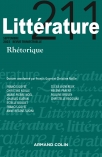
Romantisme n° 153 (3/2011)
Pour acheter ce numéro, contactez-nous
Recevez les numéros de l'année en cours et accédez à l'intégralité des articles en ligne.
La relation de Charles Gounod (1818-1893) avec les grands prix de Rome commence avant sa naissance puisque son père, François Gounod, second grand prix en 1782 avait obtenu la faveur de séjourner à la Villa Médicis. Au fil de ses trois tentatives, couronnées par le premier grand prix en 1839, Charles Gounod affina son métier et se coula dans le moule académique. Mais c’est dans la Ville éternelle qu’il trouvera son style, s’émancipera et s’enflammera pour le catholicisme. Il y reviendra plusieurs fois pour se ressourcer et défendra toujours l’institution qui, en arrachant les jeunes artistes au mercantilisme, les élève : « Rome, dira-t-il, est un enseignement. »
The relations between Charles Gounod (1818-1893) and the Grand Prix de Rome began even before his birth: his father, François Gounod, Second Grand Prix in 1782, had earlier received permission to stay at the Villa Medici. During the period of his three attempts, crowned with the Premier Grand Prix in 1839, Charles Gounod refined his skill and gradually conformed to the academic norms. In the Eternal City he discovered his own style, was artistically emancipated, and became a fervent Catholic. He returned several times to Rome to renew his artistic roots, and always defended the institution which, rescuing the young artists from mercantilism, educated them. “Rome,” he would always say, “is itself a teacher.”

